Aaron Wright ::
Industrial Designer, Experience Researcher,
Architectural Designer
Industrial Designer, Experience Researcher,
Architectural Designer

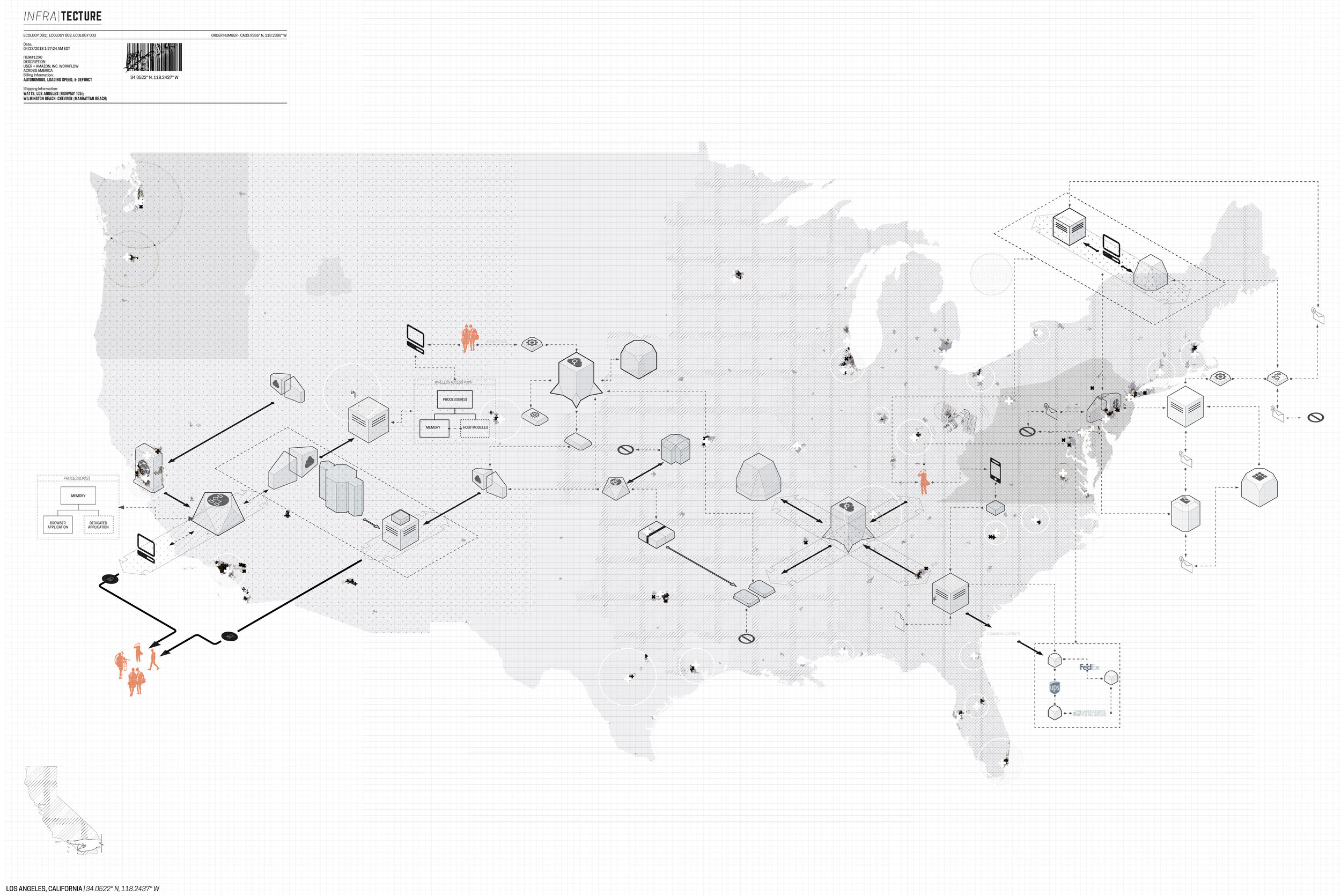
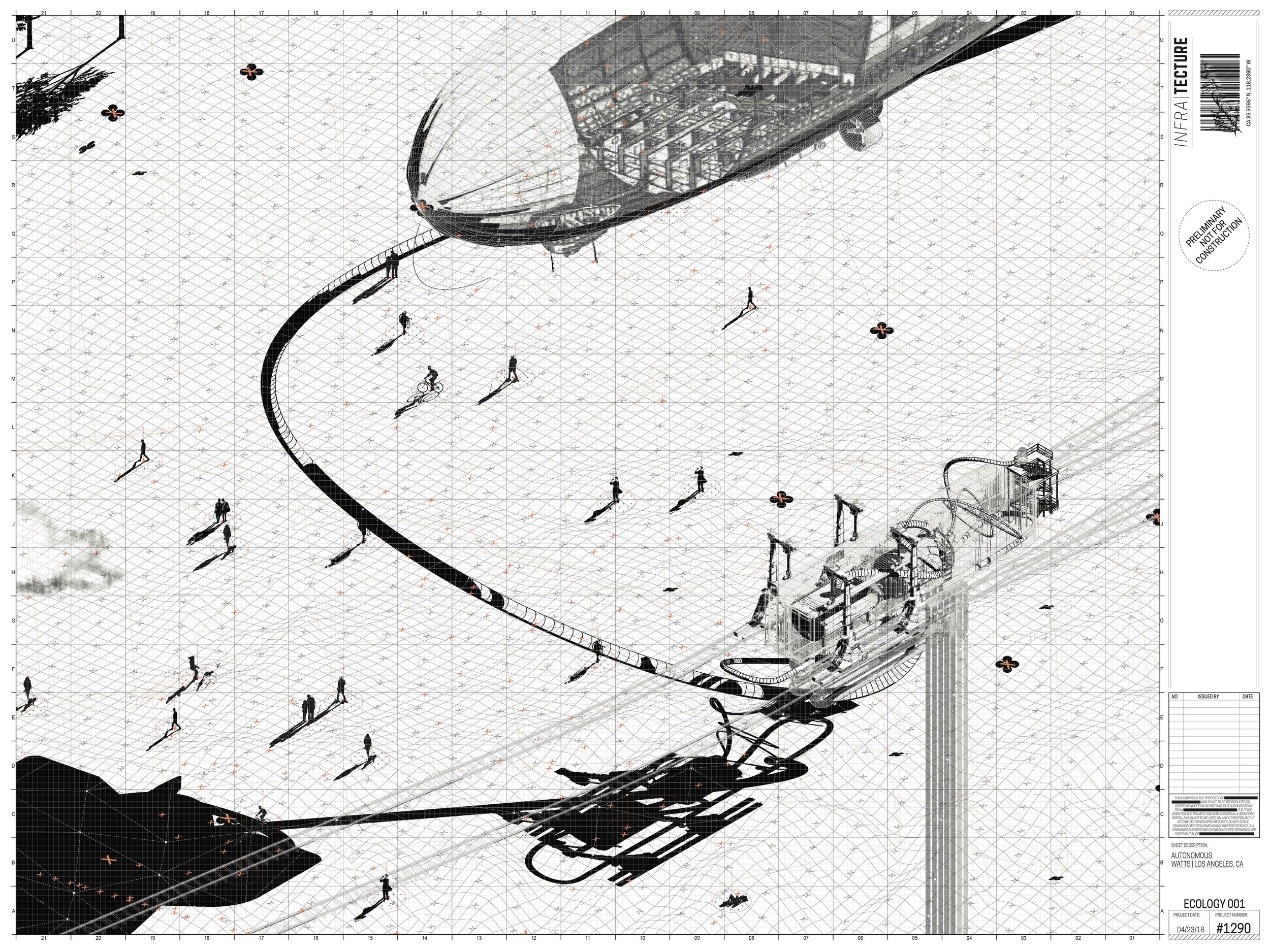

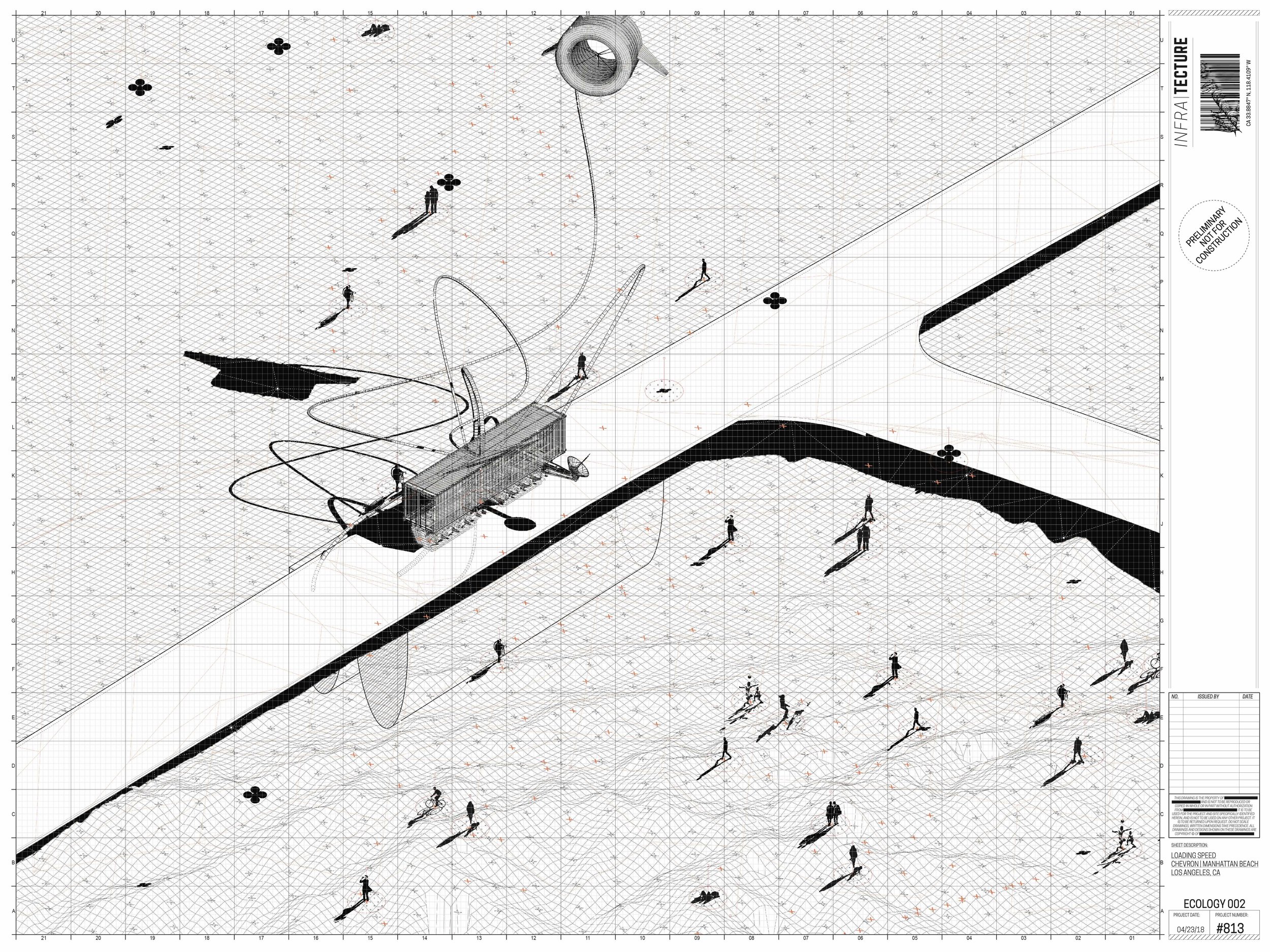

INFRATECTURE!
Infrastructure spacialized as architecturec.2017 + 2018
Tags: Infrastructure, Discursive Design, Diegetic Prototyping, Amazon, Ecologies
Toolkits: Adobe Creative Cloud, Woodworking, ArcGIS, Grasshopper, Rhino, Revit
In today’s society, we are given a systematic way to understand, think, and ultimately, exist in the world. These systems can be seen in christianity, eighteen-wheeler trucks, veganism, or plane travel. All distinctively different, yet similar in that each one defines the way you project yourself in the layered nature of infrastructure, there are two stages where this primarily plays out:
1. Logistics - what it takes to get the latest, greatest iphone to the market/the money it will take, the labor, the energy.
2. Culture - the reverberation of getting the latest, greatest iphone to market. How it affects social status, hot it connects us instantly to anyone, anything, anytime. The interesting thing about logistics and culture is the mutually beneficial relationship they have with one another - culture is affected by logistics and vice versa.
The thesis is organized around a few basic question about these two infrastructures and the preexisting relationships they may already have, such as: societal impact or privatized investing in the large-scale infrastructure is a relatively new concept how will this affect the norm and will the changing landscape of technology play into it? Can the two systems be combined as a whole to work in synchonicity? Primarily, design projects have used technology as a cure for economic, societal, and infrastructural problems. Why is technology the lynchpin in a multi-faceted system? Focusing on the social landscape that is incorporated with physical manifestations of infrastructure, the thesis seeks to manipulate multiple agents of society, utilizing technology, and logistical innovation to help design parameters for complex futures.
![]()
![]()
RE-IMAGINING THE TECHNOLOGICAL AND CULTURAL INFLUENCE ON LOGISTICAL INFRASTRUCTURE
As Jesse LeCavalier states in “Let’s Infratecture!”, “Infratecture can use scenario planning to anticipate a range of possible futures while still taking physical form.” [LeCavalier, 72]
Infratecture is partnering with the logistical, technological, and user-experience powerhouse, Amazon, Inc. This is specifically because Amazon, in 2017, has applied for over 1,000 patents to improve the ‘everything’ store. Amazon’s main goal is to reduce the friction you have with your wallet. As a corporation, Amazon is pushing the boundaries of logistics, business enterprise, and design in the form of architecture or infrastructure, to adapt to an ever-growing consumerist society. Using Los Angeles, California as a test bed, infratecture will exploit the dynamic relationship of logistical infrastructures with its user groups and how to spatialize the ramifications or repercussions of consumerism on the built environment.
![]()
![]()
![]()
INFRASTRUCTURE ECOLOGIES OF LOS ANGELES: REVISITED
In Reyner Banham’s book, Los Angeles: The Architecture of Four Ecologies, he breaks down the most relevant regions within the metropolis of Los Angeles. These prescribed four ecologies are Surfurbia, Autopia, the Plains, and the Foothills. Each one contributes to the meta architectural narrative of Los Angeles and the people that live in it. Taking the standpoint of defining places as ecologies, especially in a region such as LA, is an interesting one.
Banham’s book was published in 1971, a ground breaking body of architectural research and theory. Since 1971, culture, politics, economics, and logistics has changed drastically. Infratecture is revisiting and appropriating the standpoint of Reyner Banham, along with adding to research by defining key regions that infratecture may operate in.
![]()
![]()
![]()
This ecology examines the notion of autonomy. Mainly, this comes to fruition in the concept of the new fulfillment center. Amazon currently has a patent-pending on a dirigible distribution center that occupies an airspace not currently used, supplying regions via drone delivery systems. Infratecture will use dormant brownfield/ rail yards throughout the greater Los Angeles area to provide geothermal power to each one of these systems, as well as excess storage and alternative drone landing area. There is no real social interaction or program involved with this particular ecology. The main social function is to become aware of the ramifications of consumerism on an energy source level.
![]()
![]()
![]()
![]()
The infratecture of The Ecology of Loading Speed uses a ‘crawler’ [specific node that reacts to bandwidth in any given region within Los Angeles and supplies users with WIFI and/or packages]. The crawler has a unique social program, where it both a distribution center for packaged and a distribution center of ‘soft’ technological infrastructures. Both develop economies around the infratectural node as it crawls down Interstate 105.![]()
![]()
![]()
![]()
The University of Tennessee, Knoxville; Self-Directed Thesis
1. Logistics - what it takes to get the latest, greatest iphone to the market/the money it will take, the labor, the energy.
2. Culture - the reverberation of getting the latest, greatest iphone to market. How it affects social status, hot it connects us instantly to anyone, anything, anytime. The interesting thing about logistics and culture is the mutually beneficial relationship they have with one another - culture is affected by logistics and vice versa.
The thesis is organized around a few basic question about these two infrastructures and the preexisting relationships they may already have, such as: societal impact or privatized investing in the large-scale infrastructure is a relatively new concept how will this affect the norm and will the changing landscape of technology play into it? Can the two systems be combined as a whole to work in synchonicity? Primarily, design projects have used technology as a cure for economic, societal, and infrastructural problems. Why is technology the lynchpin in a multi-faceted system? Focusing on the social landscape that is incorporated with physical manifestations of infrastructure, the thesis seeks to manipulate multiple agents of society, utilizing technology, and logistical innovation to help design parameters for complex futures.
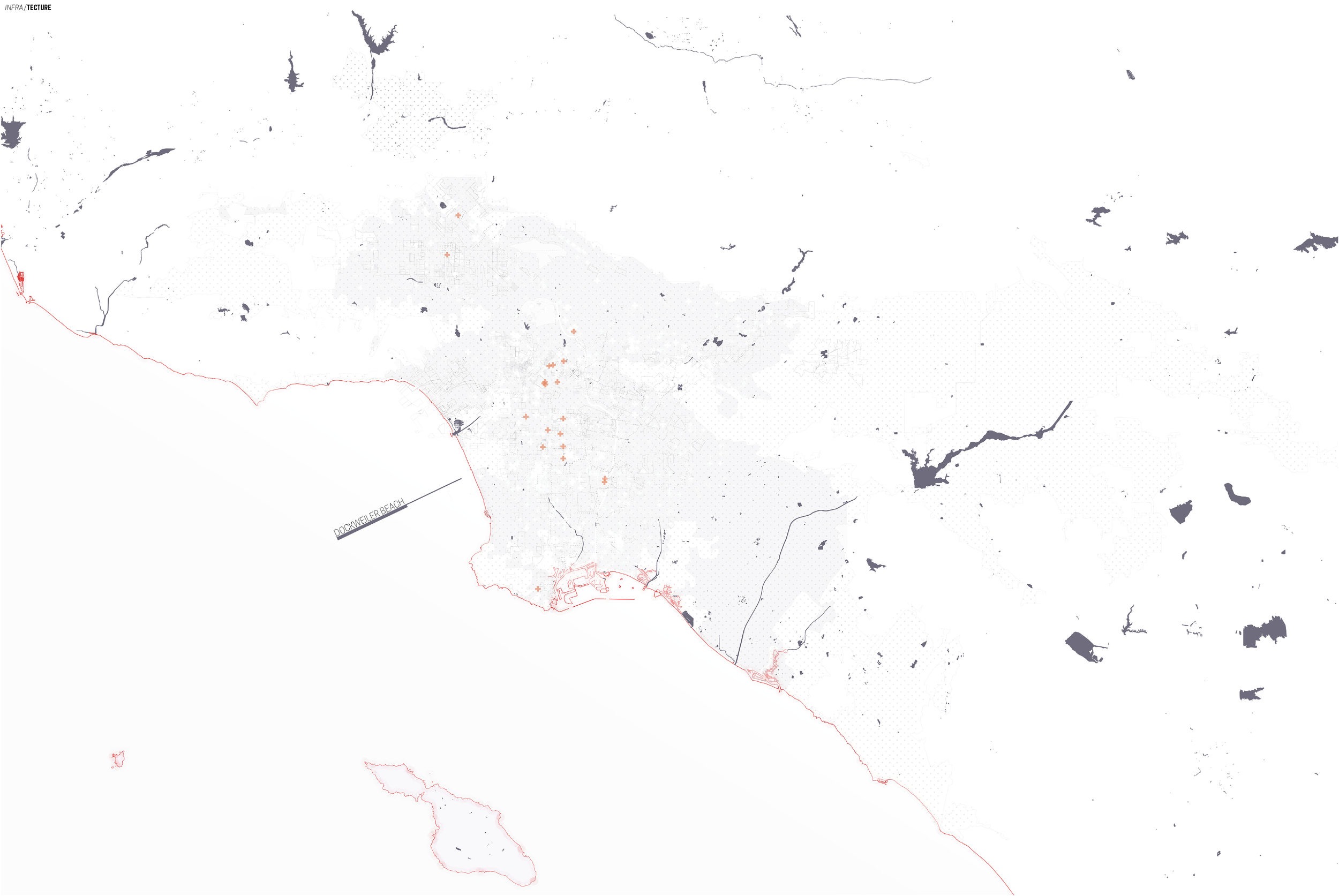

RE-IMAGINING THE TECHNOLOGICAL AND CULTURAL INFLUENCE ON LOGISTICAL INFRASTRUCTURE
As Jesse LeCavalier states in “Let’s Infratecture!”, “Infratecture can use scenario planning to anticipate a range of possible futures while still taking physical form.” [LeCavalier, 72]
Infratecture is partnering with the logistical, technological, and user-experience powerhouse, Amazon, Inc. This is specifically because Amazon, in 2017, has applied for over 1,000 patents to improve the ‘everything’ store. Amazon’s main goal is to reduce the friction you have with your wallet. As a corporation, Amazon is pushing the boundaries of logistics, business enterprise, and design in the form of architecture or infrastructure, to adapt to an ever-growing consumerist society. Using Los Angeles, California as a test bed, infratecture will exploit the dynamic relationship of logistical infrastructures with its user groups and how to spatialize the ramifications or repercussions of consumerism on the built environment.
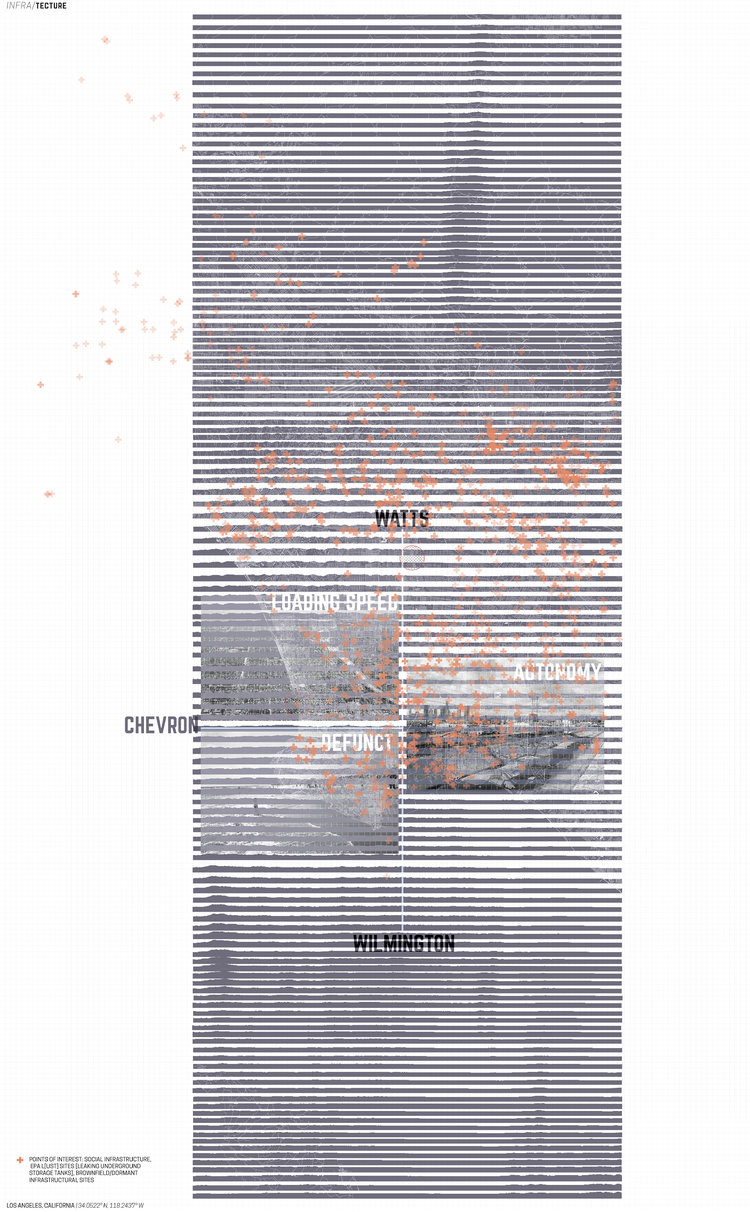


INFRASTRUCTURE ECOLOGIES OF LOS ANGELES: REVISITED
A Look Into the Cultural Landscape of Today
In Reyner Banham’s book, Los Angeles: The Architecture of Four Ecologies, he breaks down the most relevant regions within the metropolis of Los Angeles. These prescribed four ecologies are Surfurbia, Autopia, the Plains, and the Foothills. Each one contributes to the meta architectural narrative of Los Angeles and the people that live in it. Taking the standpoint of defining places as ecologies, especially in a region such as LA, is an interesting one.
Banham’s book was published in 1971, a ground breaking body of architectural research and theory. Since 1971, culture, politics, economics, and logistics has changed drastically. Infratecture is revisiting and appropriating the standpoint of Reyner Banham, along with adding to research by defining key regions that infratecture may operate in.
The Ecology of Autonomy
Leveraging Dormant Brownfield and Rail Yards
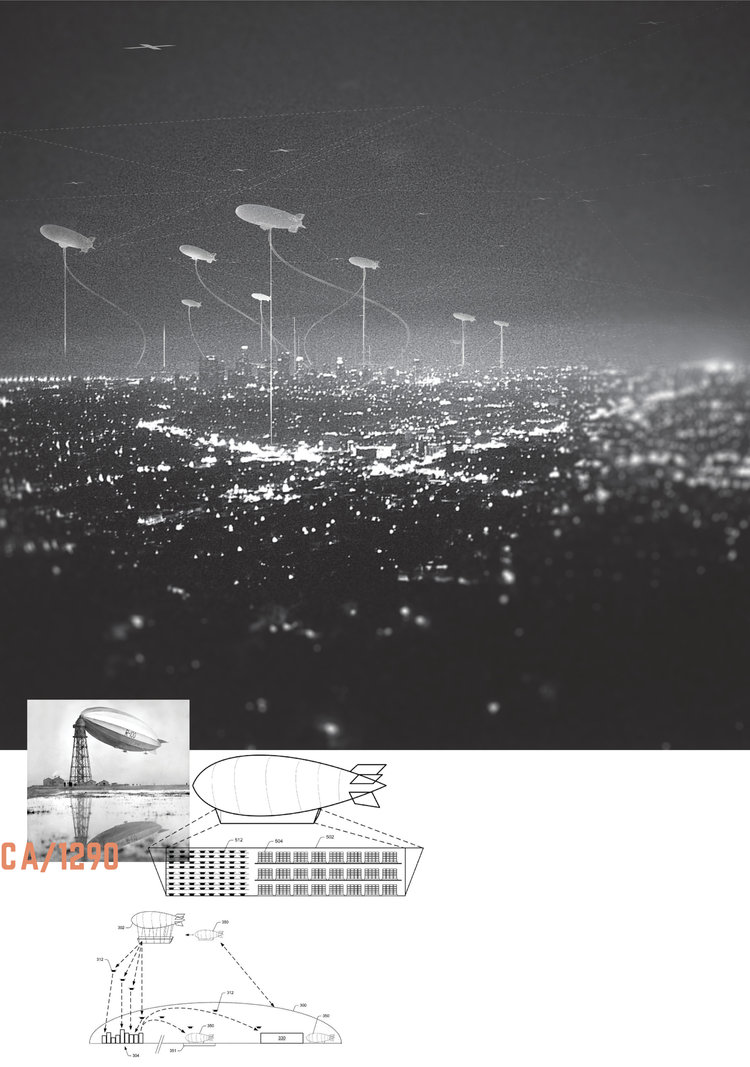
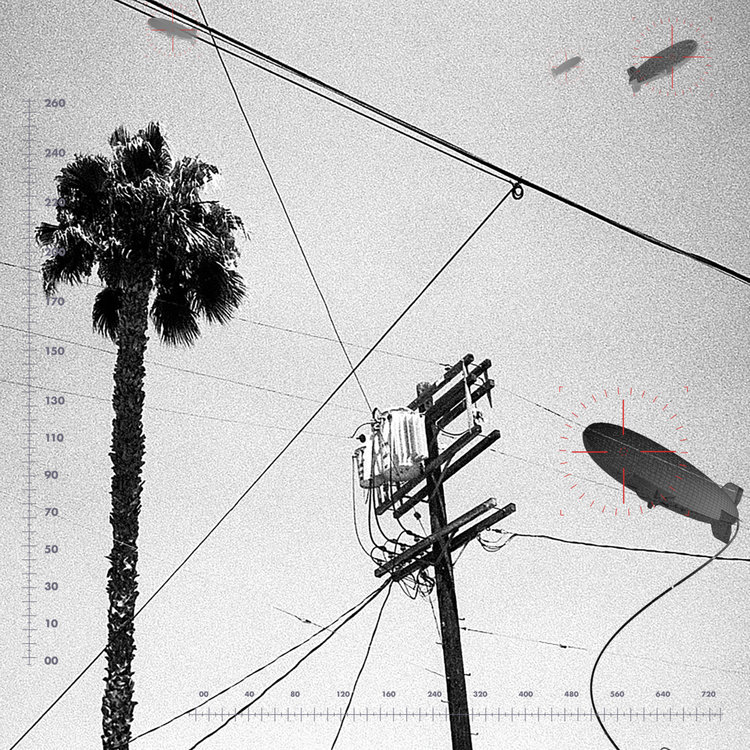
This ecology examines the notion of autonomy. Mainly, this comes to fruition in the concept of the new fulfillment center. Amazon currently has a patent-pending on a dirigible distribution center that occupies an airspace not currently used, supplying regions via drone delivery systems. Infratecture will use dormant brownfield/ rail yards throughout the greater Los Angeles area to provide geothermal power to each one of these systems, as well as excess storage and alternative drone landing area. There is no real social interaction or program involved with this particular ecology. The main social function is to become aware of the ramifications of consumerism on an energy source level.

The Ecology of Loading Speed
Leveraging the Obsolescence of Interstate 105
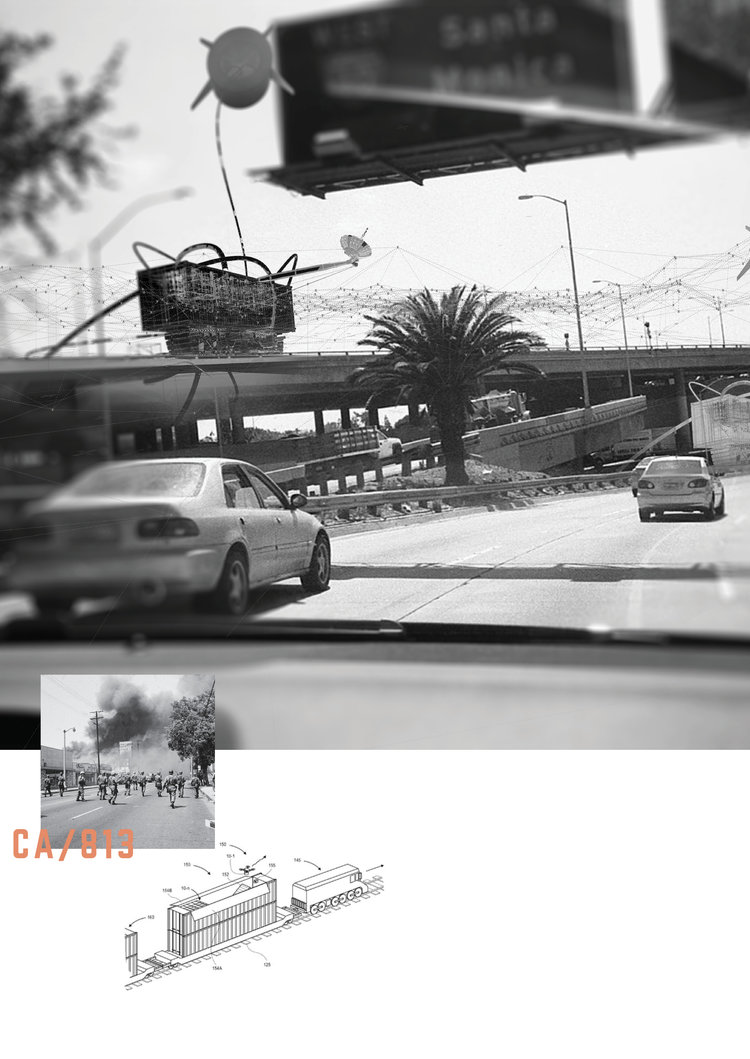

The infratecture of The Ecology of Loading Speed uses a ‘crawler’ [specific node that reacts to bandwidth in any given region within Los Angeles and supplies users with WIFI and/or packages]. The crawler has a unique social program, where it both a distribution center for packaged and a distribution center of ‘soft’ technological infrastructures. Both develop economies around the infratectural node as it crawls down Interstate 105.

The Ecology of the Defunct
Leveraging Derelict Oil Derricks within the Greater Los Angeles Area

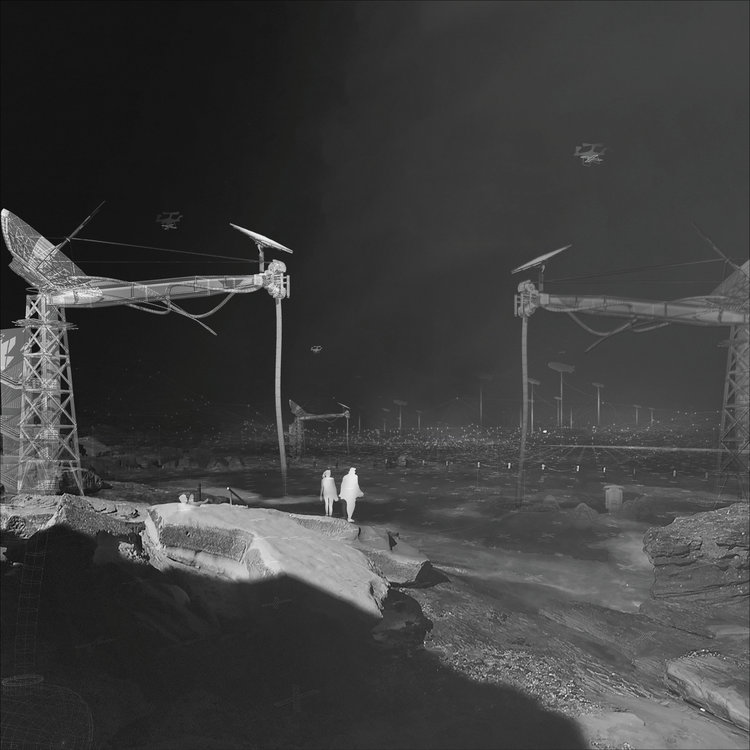
The University of Tennessee, Knoxville; Self-Directed Thesis
